Health Care > EXAM > NURS 101 NCLEX Practice Exam 4 (50 Items) – UPDATED All Questions Answeared (All)
NURS 101 NCLEX Practice Exam 4 (50 Items) – UPDATED All Questions Answeared
Document Content and Description Below
NCLEX Practice Exam 4 (50 Items) Question 1 The primary reason for rapid continuous rewarming of the area affected by frostbite is to: Lessen the amount of cellular damage Prevent the formation of bli... sters Promote movement Prevent pain and discomfort Question 1 Explanation: Rapid continuous rewarming of a frostbite primarily lessens cellular damage. Options B, C, and D: Rewarming of a frosbite does not prevent the formation of blisters. It does promote movement, but this is not the primary reason for rapid rewarming. It might increase pain for a short period of time as the feeling comes back into the extremity. Question 2 A client recently started on hemodialysis wants to know how the dialysis will take the place of his kidneys. The nurse’s response is based on the knowledge that hemodialysis works by: Passing water through a dialyzing membrane Eliminating plasma proteins from the blood Lowering the pH by removing nonvolatile acids Filtering waste through a dialyzing membrane Question 2 Explanation: Hemodialysis works by using a dialyzing membrane to filter waste that has accumulated in the blood. Options A, B, and C: Hemodialysis does not pass water through a dialyzing membrane nor does it eliminate plasma proteins or lower the pH. Question 3 During a home visit, a client with AIDS tells the nurse that he has been exposed to measles. Which action by the nurse is most appropriate? Administer an antibiotic Contact the physician for an order for immune globulin Administer an antiviral Tell the client that he should remain in isolation for 2 weeks Question 3 Explanation: The client who is immunosuppressed and is exposed to measles should be treated with medications to boost his immunity to the virus. Options A, C, and D: An antibiotic or antiviral will not protect the client and it is too late to place the client in isolation. Question 4 A client hospitalized with MRSA (methicillin-resistant staph aureus) is placed on contact precautions. Which statement is true regarding precautions for infections spread by contact? The client should be placed in a room with negative pressure. Infection requires close contact; therefore, the door may remain open. Transmission is highly likely, so the client should wear a mask at all times. Infection requires skin-to-skin contact and is prevented by hand washing, gloves, and a gown. Question 4 Explanation: The client with MRSA should be placed in isolation. Gloves, a gown, and a mask should be used when caring for the client and hand washing is very important. Options A and B: The door should remain closed, but a negative-pressure room is not necessary. Option C: MRSA is spread by contact with blood or body fluid or by touching the skin of the client. It is cultured from the nasal passages of the client, so the client should be instructed to cover his nose and mouth when he sneezes or coughs. It is not necessary for the client to wear the mask at all times; the nurse should wear the mask. Question 5 A client who is admitted with an above-the-knee amputation tells the nurse that his foot hurts and itches. Which response by the nurse indicates understanding of phantom limb pain? “The pain will go away in a few days.” “The pain is due to peripheral nervous system interruptions. I will get you some pain medication.” “The pain is psychological because your foot is no longer there.” “The pain and itching are due to the infection you had before the surgery.” Question 5 Explanation: Pain related to phantom limb syndrome is due to peripheral nervous system interruption. Option A is incorrect because phantom limb pain can last several months or indefinitely. Option C is incorrect because it is not psychological. Option D: It is also not due to infections. Question 6 A client with cancer of the pancreas has undergone a Whipple procedure. The nurse is aware that during the Whipple procedure, the doctor will remove the: Head of the pancreas Proximal third section of the small intestines Stomach and duodenum Esophagus and jejunum Question 6 Explanation: During a Whipple procedure the head of the pancreas, which is a part of the stomach, the jejunum, and a portion of the stomach are removed and anastomosed. Answer B is incorrect because the proximal third of the small intestine is not removed. The entire stomach is not removed, as in answer C, and in answer D, the esophagus is not removed. Question 7 The physician has ordered a minimal-bacteria diet for a client with neutropenia. The client should be taught to avoid eating: Packed fruits Salt Fresh raw pepper Ketchup Question 7 Explanation: Fresh raw or whole pepper are not allowed unless thoroughly cooked in food. Option A: Canned fruits are allowed since they are processed and pasteurized. Option B and D: Salt, ketchup, and sugar are allowed. Question 8 A client is discharged home with a prescription for Coumadin (sodium warfarin). The client should be instructed to: Have a Protime done monthly Eat more fruits and vegetables Drink more liquids Avoid crowds Question 8 Explanation: Coumadin is an anticoagulant. One of the tests for bleeding time is a Protime. This test should be done monthly. Option B: Eating more fruits and vegetables is not necessary, and dark-green vegetables contain vitamin K, which increases clotting. Options C and D: Drinking more liquids and avoiding crowds is not necessary. Question 9 The nurse is assisting the physician with removal of a central venous catheter. To facilitate removal, the nurse should instruct the client to: Perform the Valsalva maneuver as the catheter is advanced Turn his head to the left side and hyperextend the neck Take slow, deep breaths as the catheter is removed Turn his head to the right while maintaining a sniffing position Question 9 Explanation: The client who is having a central venous catheter removed should be told to hold his breath and bear down. This prevents air from entering the line. Answers B, C, and D will not facilitate removal. - - - - - - - - - - - -- - - - -- - - -- -- - - - -- - - - - - - - - -- - - - - - - -Question 46 Explanation: Maintaining adequate fluid and replacing vasopressin are the main objectives in treating diabetes insipidus. Option A: Diabetes is a chronic condition associated with abnormally high levels of sugar (glucose) in the blood. Insulin produced by the pancreas lowers blood glucose. Option C: Diabetic ketoacidosis is a result of severe insulin insufficiency. Option D: An excess of antidiuretic hormone leads to SIADH, causing the patient to retain fluid. Question 47 Patients with Type 1 diabetes mellitus may require which of the following changes to their daily routine during periods of infection? No changes. Less insulin. More insulin. Oral diabetic agents. Question 47 Explanation: During periods of infection or illness, patients with Type 1 diabetes may need even more insulin to compensate for increased blood glucose levels. Question 48 On a follow-up visit after having a vaginal hysterectomy, a 32-year-old patient has a decreased hematocrit level. Which of the following complications does this suggest? Hematoma. Hypovolemia. Infection. Pulmonary embolus (PE) Question 48 Explanation: A decreased hematocrit level is a sign of hematoma, a delayed complication of abdominal and vaginal hysterectomy. Option B: Symptoms of hypovolemia include increased hematocrit and hemoglobin values. Option C: Infection manifests with fever and high WBC count. Option D: Symptoms of a PE include dyspnea, chest pain, cough, hemoptysis, restlessness, and signs of shock. Question 49 A patient has partial-thickness burns to both legs and portions of his trunk. Which of the following I.V. fluids is given first? Albumin. D5W. Lactated Ringer’s solution. 0.9% sodium chloride solution with 2 mEq of potassium per 100 ml. Question 49 Explanation: Option A: Albumin is used as adjunct therapy, not primary fluid replacement. Option B: Dextrose isn’t given to burn patients during the first 24 hours because it can cause pseudodiabetes. Option D: The patient is hyperkalemic from the potassium shift from the intracellular space to the plasma, so potassium would be detrimental. Question 50 Which of the following techniques is correct for obtaining a wound culture specimen from a surgical site? Thoroughly irrigate the wound before collecting the specimen. Use a sterile swab and wipe the crusty area around the outside of the wound. Gently roll a sterile swab from the center of the wound outward to collect drainage. Use a sterile swab to collect drainage from the dressing. Question 50 Explanation: Rolling a swab from the center outward is the right way to obtain a culture specimen from a wound. Option A: Irrigating the wound washes away drainage, debris, and many of the colonizing or infecting microorganisms. Option B: The outside of the wound and the dressing may be colonized with microorganisms that haven’t affected the wound, so specimens from these sites could give inaccurate results. [Show More]
Last updated: 1 year ago
Preview 1 out of 25 pages

Buy this document to get the full access instantly
Instant Download Access after purchase
Add to cartInstant download
We Accept:

Reviews( 0 )
$14.50
Document information
Connected school, study & course
About the document
Uploaded On
Dec 01, 2021
Number of pages
25
Written in
Additional information
This document has been written for:
Uploaded
Dec 01, 2021
Downloads
0
Views
68

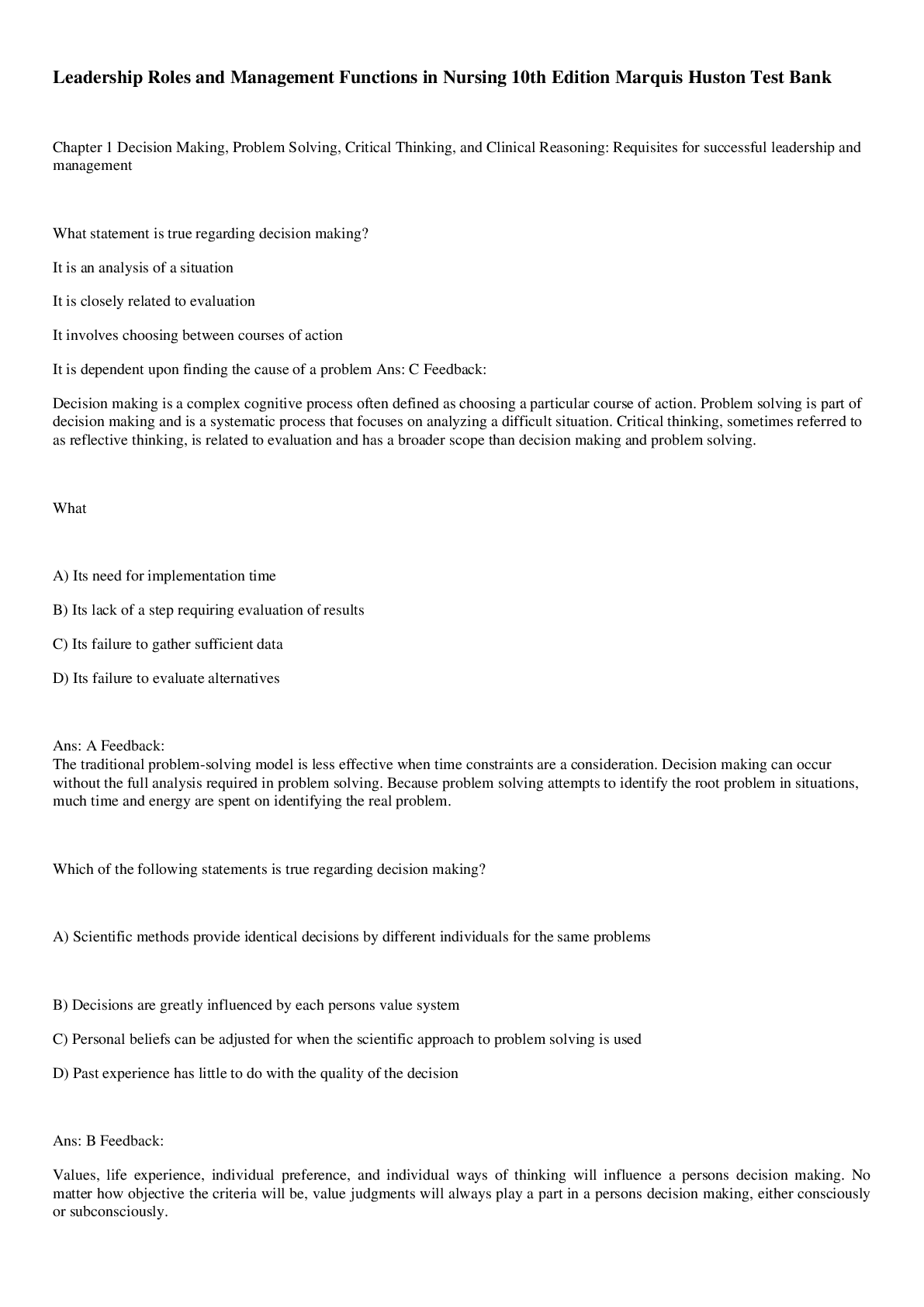





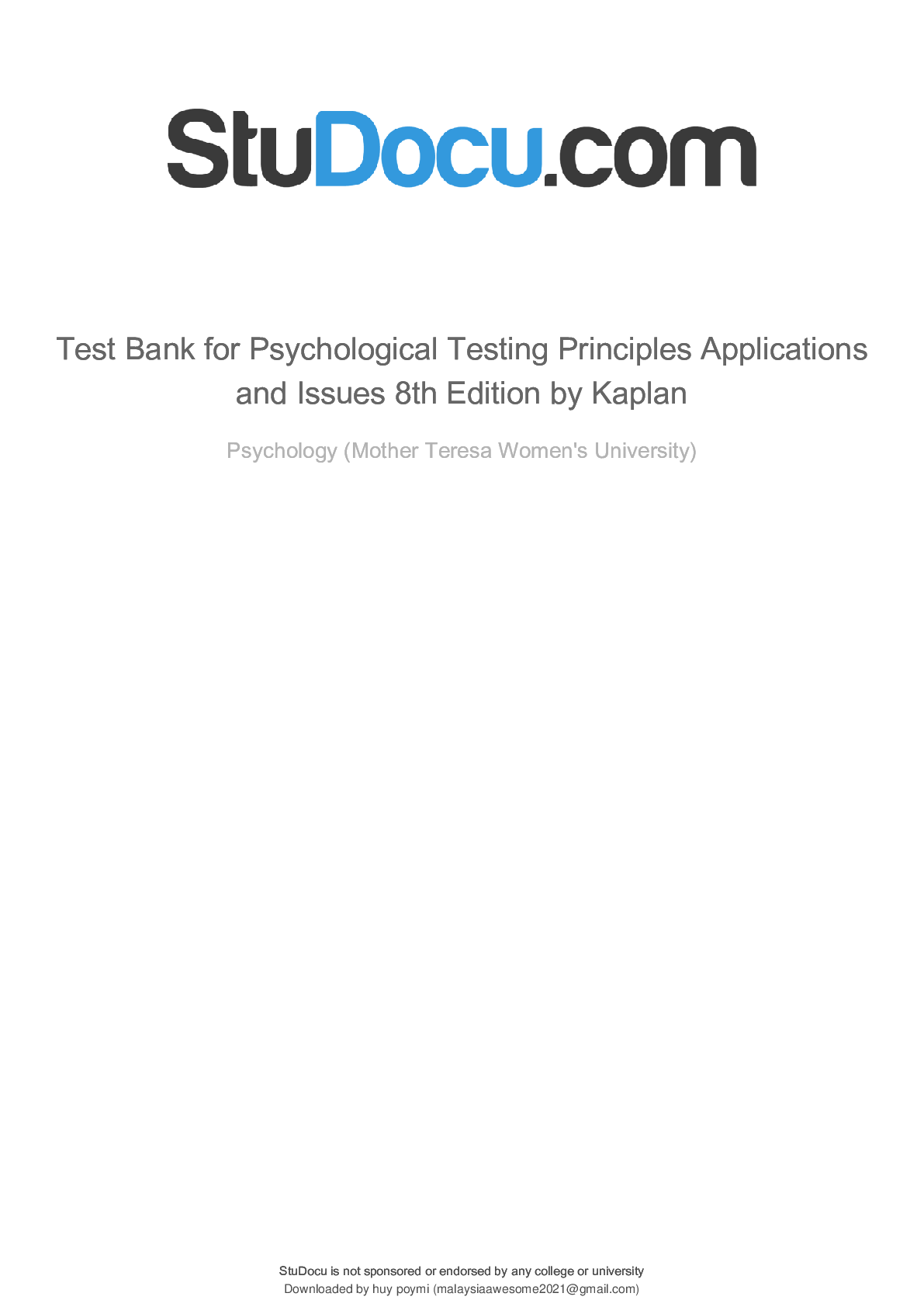


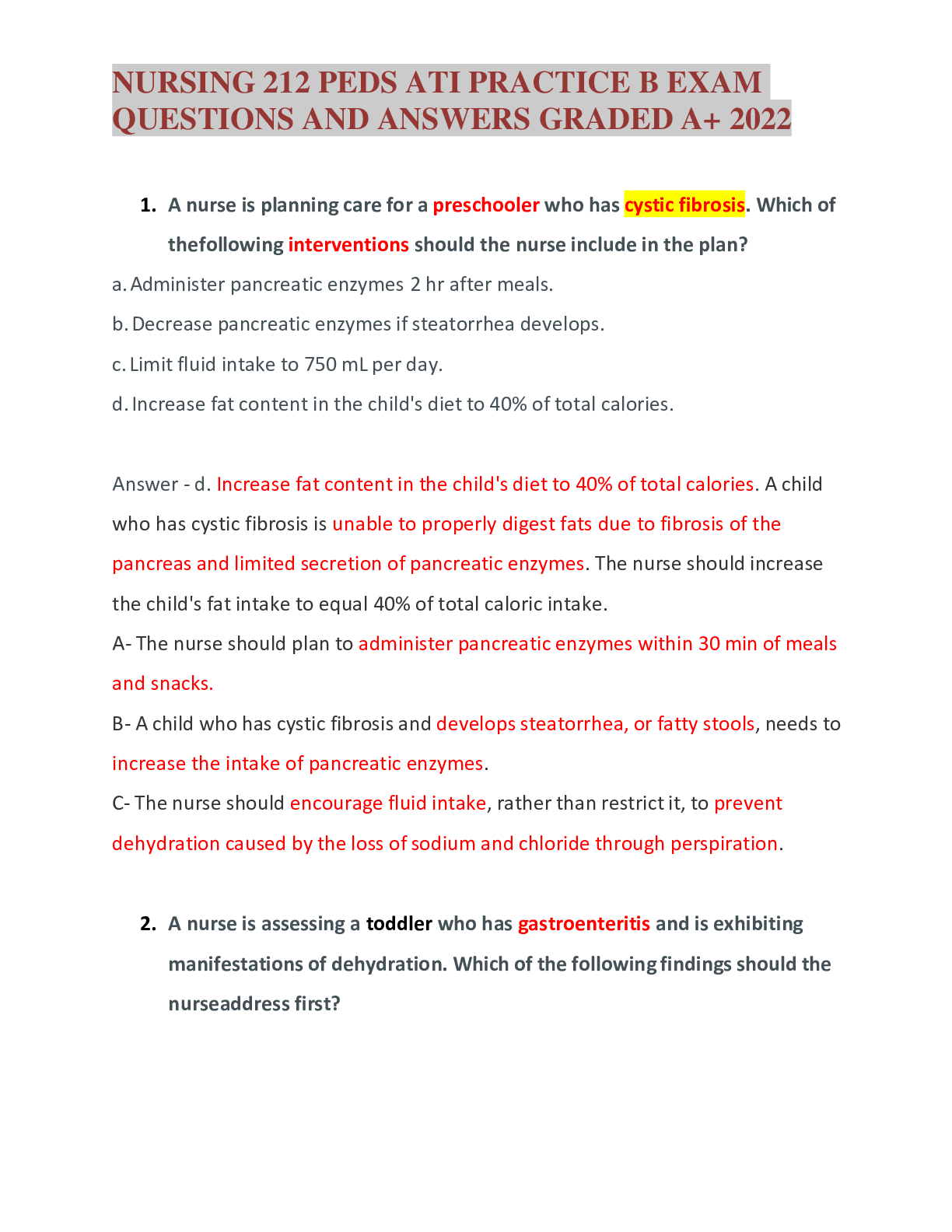

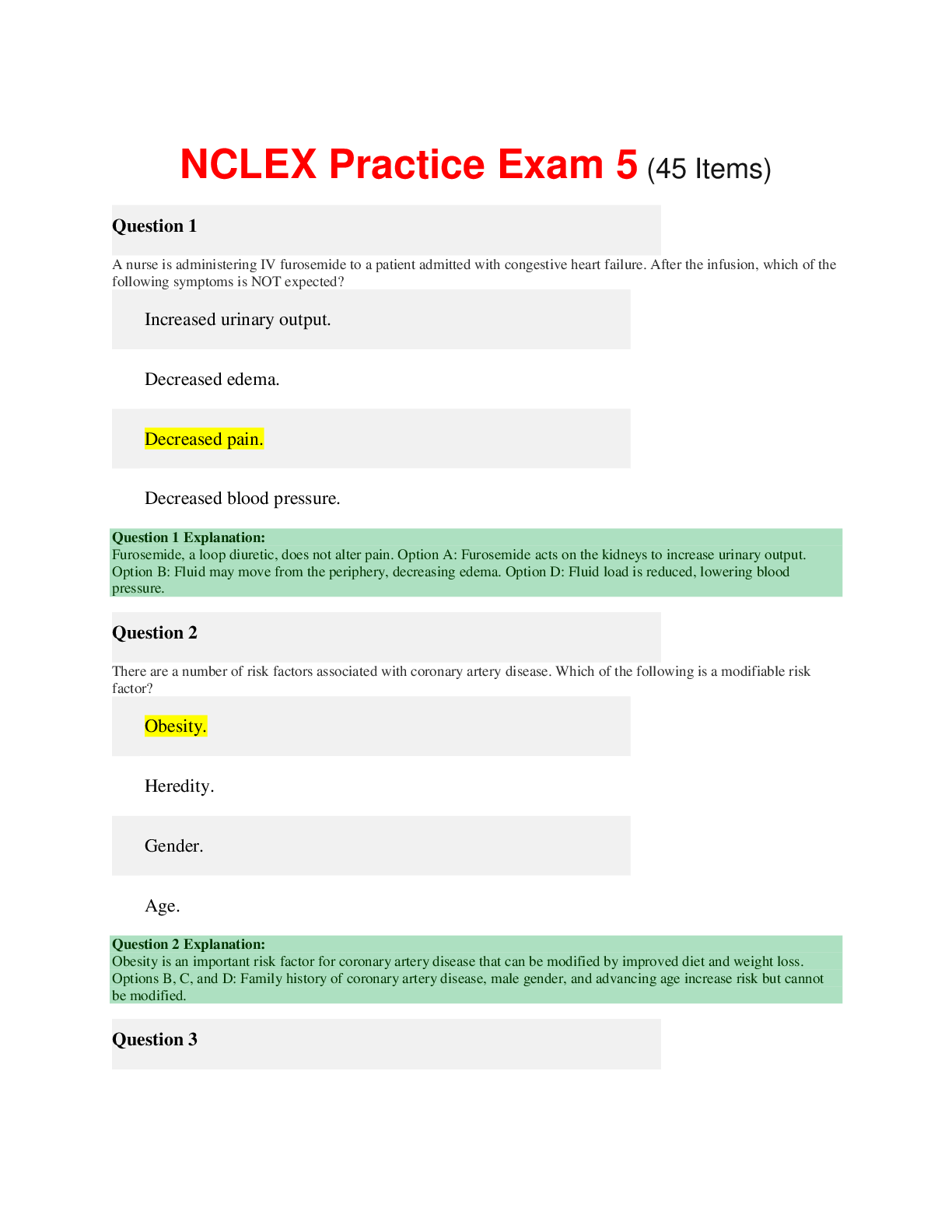
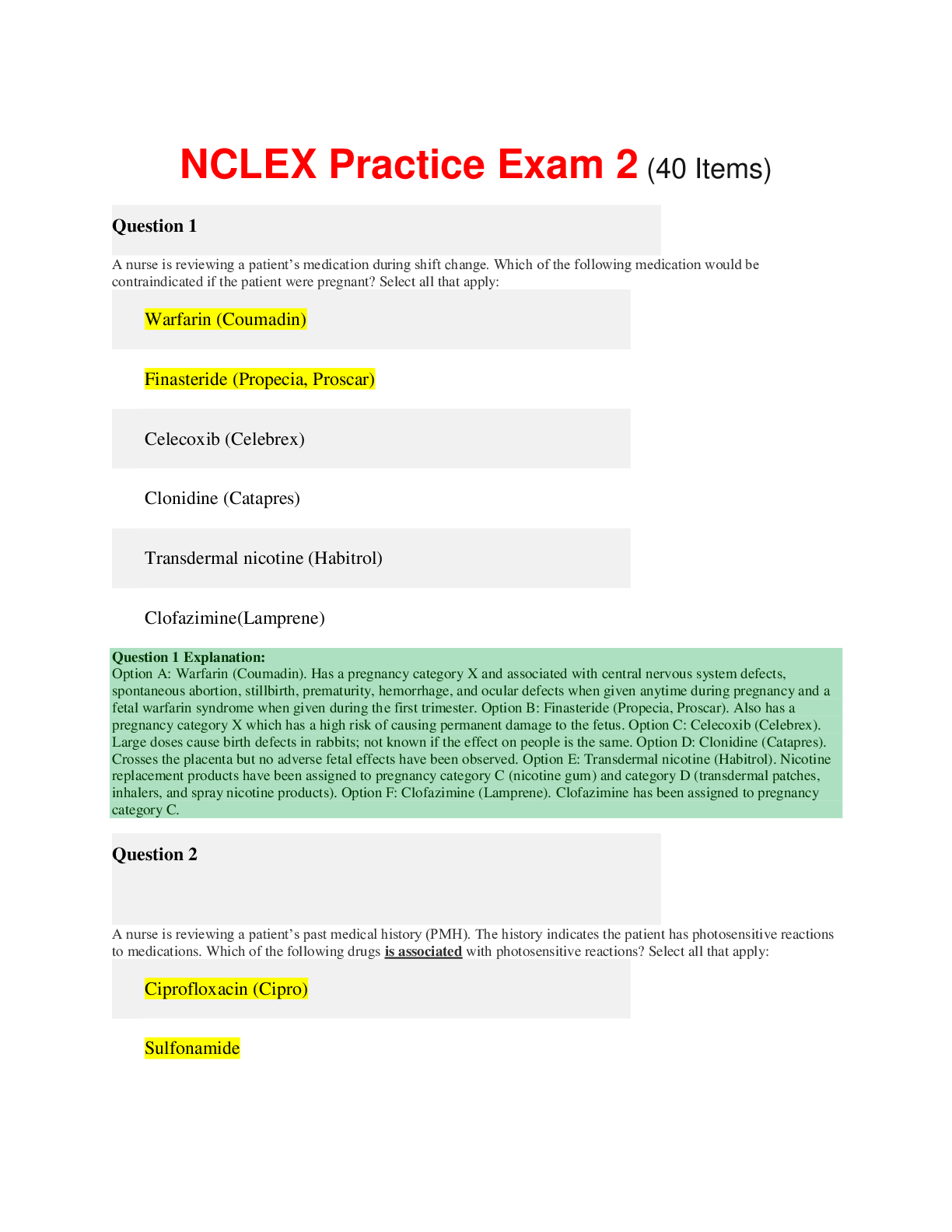
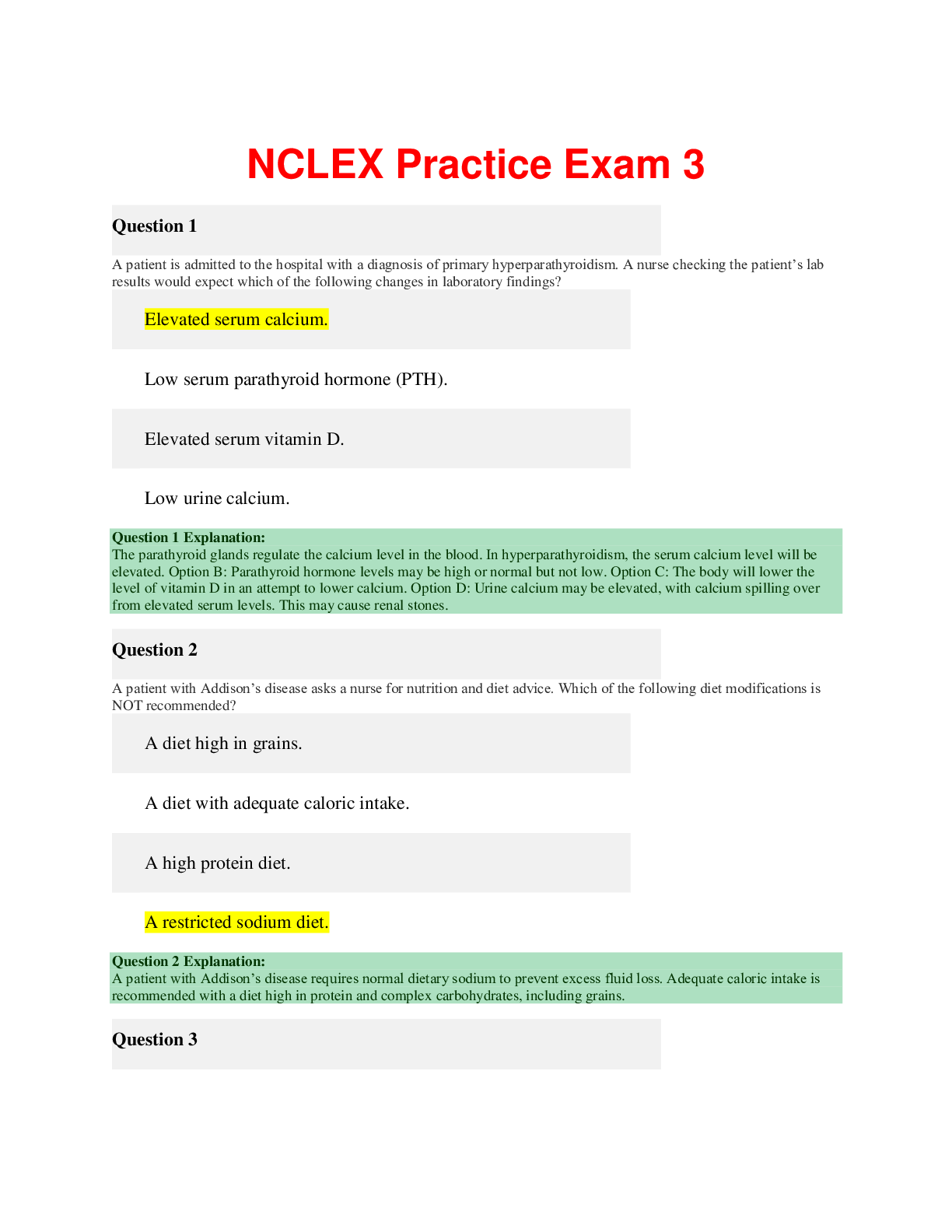

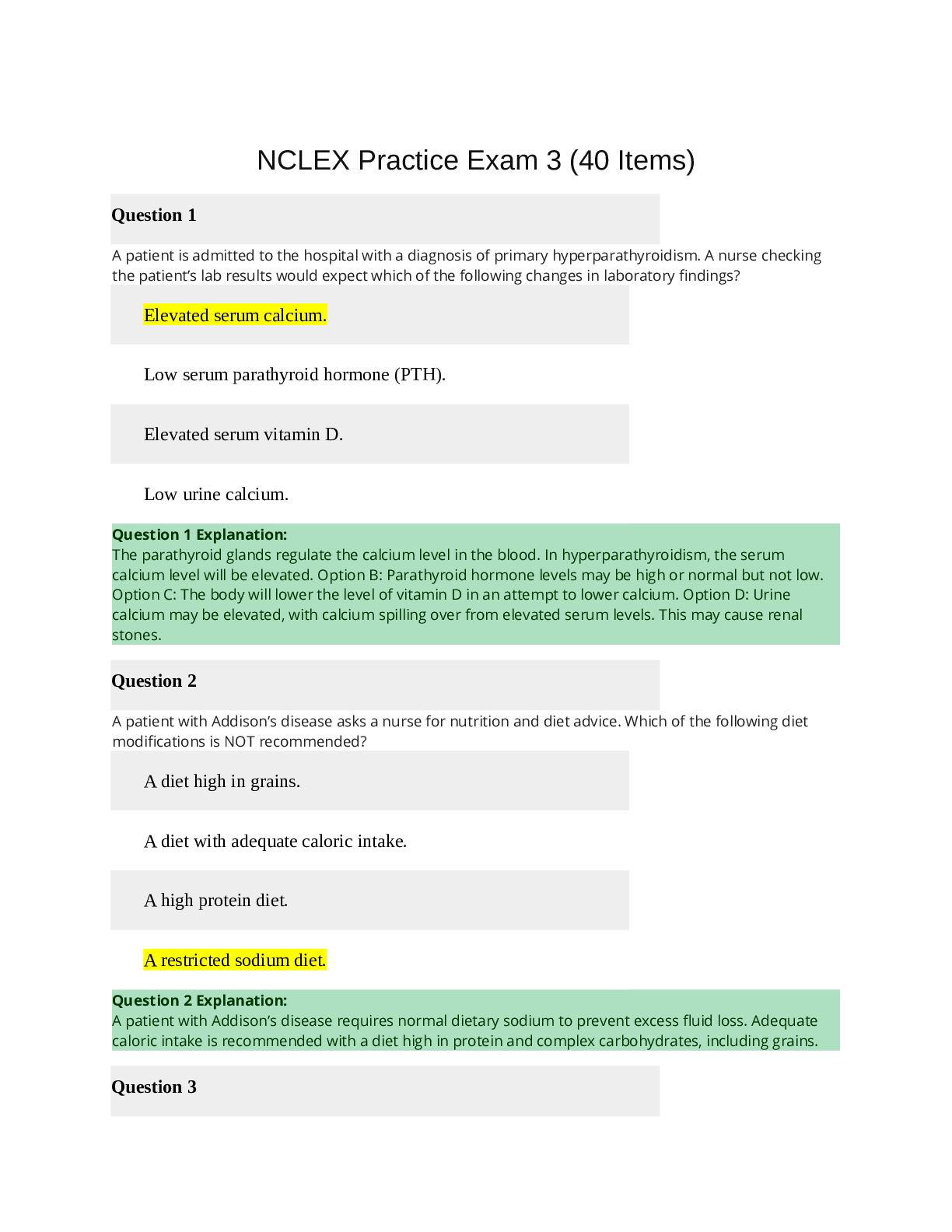

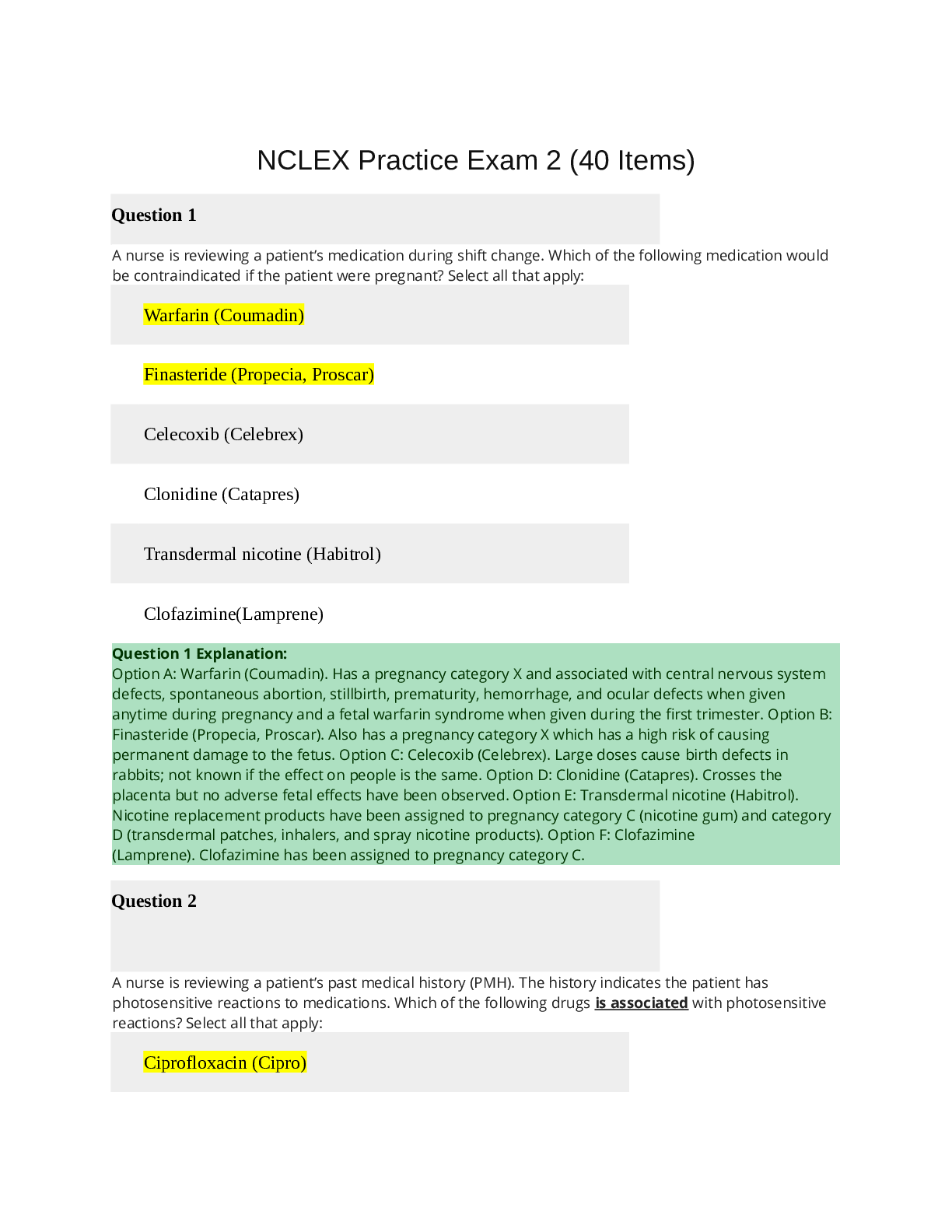
.png)


